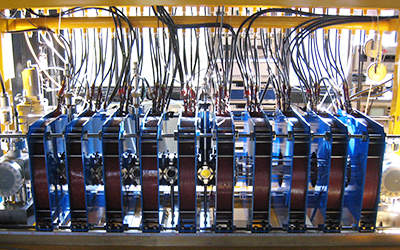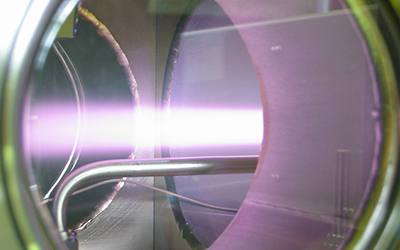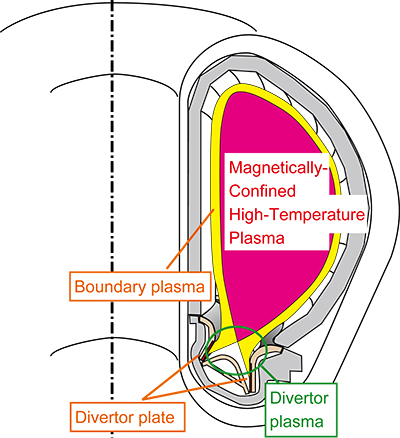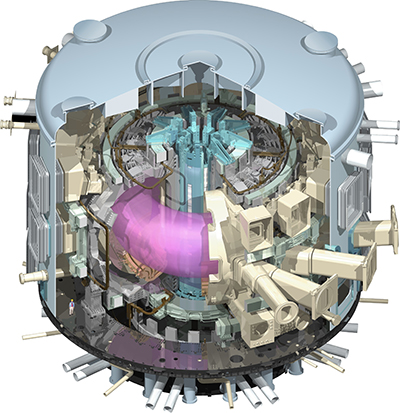Front Line Research
We conduct research into the properties of plasma heat and particle fluxes flowing into the divertor region utilizing our experimental device DT-ALPHA.
We aim for the clarification of the various phenomena that occur in the divertor region.
In nuclear fusion, an enormous amount of energy is generated when light nuclei collide with each other and form a heavy atomic nucleus in exchange for a slight loss in mass. A nuclear fusion reactor's purpose is to harness that energy as an energy source. However, since atomic nuclei have positive electric charges, they repel each other and do not bind together. Therefore, there is a need for provoking nuclear fusion by forming the nuclei into high-density plasma through heating them to high temperatures of 100 million degrees. But as there is no material on earth that withstands 100 million degrees, we made a strong magnetic field "basket" that confines plasma, provoking it to react. This is the basic principle of a nuclear fusion reactor.
When the outer most surface of the magnetic field "basket" contacts the reactor's metallic walls, the atoms of the wall are scraped away and mix with the plasma. The metallic atoms are known to cool the plasma temperature.
The device that prevents the outer most surface of the magnetic field "basket" from contacting the reactor walls is called a divertor. At the Tobita Laboratory, we conduct research into clarifying the various phenomena that occur in the divertor region.

The DT-ALPHA, a nuclear fusion reactor divertor simulator

Plasma ejected from the DT-ALPHA




